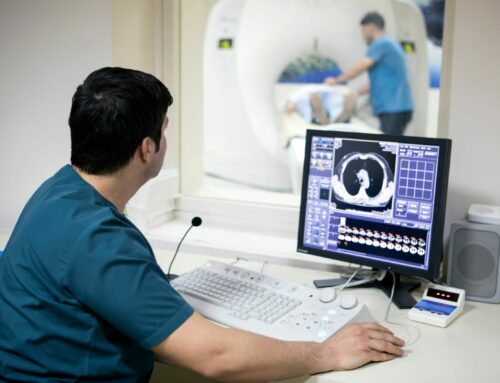By Terrence D. Sims, President of Strategic Growth and Marketing, Raintree Systems |
As COVID-19 continues to influence patient behaviors and causes providers to reevaluate how they operate their businesses, healthcare practices all around the world started looking for solutions that emphasize clinical efficiencies, elevate patient revenue cycle management, as well as feature enhanced reporting and analytics tools. More so, along with facing challenges of the patient intake process during a pandemic, providers have also been put to the test with learning how to meet the sudden demand for virtual care by adapting to digital healthcare technologies that utilize high levels of automation, facilitate more patient engagement efforts and focus on financial sustainability.
Security and Compliance
In the world of healthcare, efficiency doesn’t just matter at the surface-level but rather in every individual aspect of treatment whether it be scheduling, reporting or financing. To ensure your EHR can keep up with regular system updates, it should host an educational database that allows providers to quickly train staff as well as give patients easy access to explanatory articles and videos. Having these resources conveniently available will help foster positive patient outcomes and encourage seamless software maintenance. Additionally, while compliance laws allow for the protection of patients’ health information (PHI) and the overall safety of practice operations, it is also important to understand that cybersecurity is an extremely high priority. Especially now with the shift to a remote workforce, employees at home are much more vulnerable to hackers’ attempts to cease connectivity and override confidential data, making the use of virtual private networks (VPN) and verified firewall software critical to the safeguarding of vital business information.
User-Friendly Patient Experience and Satisfaction
Other than fast navigation and easy access, features to pay close attention to when looking for an EHR software include simple dashboards, thorough visit tracking, e-prescribing features, and of course intuitive reporting modules. With these selling points in mind, you need to make sure your software is customizable and hosts a range of specialty-specific templates that accommodate multiple patient treatment plans as well as configure unique communication narratives for patients, providers, referral sources, and payors.
Technologies like telehealth offer us an alternative method of not only delivering care but also connecting with one another and will continue to make an impact on how providers engage with their patients going forward. Also, the adoption of patient portals, self-check-in kiosks, and QR codes greatly reduce the risks of exposure as well as increase scheduling flexibility and clinical availability. Remote patient monitoring or RPM has also paved the way for organizational resilience in the sense of optimizing team-based care as well as stabilizing patient outcomes with safer alternatives to in-person visits.
Intuitive Reporting and Automation
EHR platforms involve an array of innovative tools that can make a positive impact on a practice’s productivity and profitability. Beyond simple record keeping, your EHR technology should include tools that offer flexible functionality and interactive engagement so that you have more opportunities to focus on patient care and waste less time on troubleshooting staff errors or reconfiguring documentation notes.
With automated workflows, comprehensive reporting features as well as insightful productivity metrics you can simplify your practice’s workload and streamline task management. Picklists also allow you to create templates, line-item defaults, and define column choices so that information is easily accessible and readily available.
With the proper analytic reporting features, it’s easy to empower businesses to not only inspect data but to interact with it by utilizing important information to develop tactical plans, make informed decisions and gain a 360° view into how your business operates on the daily. So much so, that to say “data is power” would be an understatement, considering business intelligence has proven extremely helpful for providers now and during the initial spread of COVID back in March of 2020 when patients began to panic, facilities were overwhelmed and businesses were unprepared to overcome crippling, restrictive legal mandates. That’s why successfully compiling, tracking as well as monitoring statistical trends, KPI’s and financial insights is what has led the healthcare industry to effectively improve clinical performance by measuring intake metrics like length of stay, drop rate, and visit cancellations.
Interoperability
Whether you choose to integrate or implement software, advanced technology has given providers the capability to pick and choose which systems benefit their business. For instance, patient engagement, revenue cycle management, and credentialing are just some solutions that are important for providers to consider when choosing their EHR system. With an all-in-one mindset, your practice will be better equipped to accrue faster patient resolutions, avoid preventable mistakes, expand clinical availability and overall heighten patient satisfaction.
With the many lessons learned over the course of this past year and a half, the rest of 2021 presents us with its fair share of both residual challenges and promising opportunities. As advancing technology continues to push through communication barriers and fundamentally revive the healthcare industry, software companies, like Raintree Systems are doing their part help providers contribute to reduced costs of care, increased efficiencies, and improved affordability.
 About the Author
About the Author
Terrence D. Sims is the President of Strategic Growth & Marketing for Raintree Systems and is a career healthcare technology and operations executive with more nearly 30 years of senior leadership experience in both early-stage and Fortune 500 environments.












